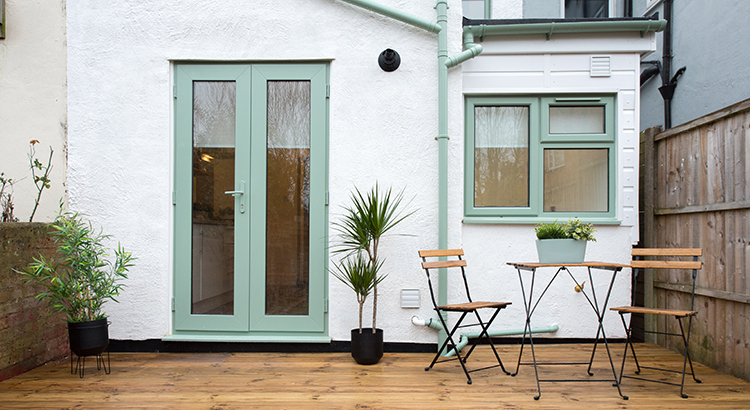We’ve been thinking a lot about flooring lately. In fact, I think about flooring – a lot. Between watching how my pets all impact a certain type of flooring over time to now considering what I’ll get in a new home it has become almost a bit of an obsession. Today we hit Contract Furnishings Mart to see what they had to offer since my contractor sent me there to price out what I wanted.
But, since this blog is more for public consumption I will try to keep my focus on the more general topic of how to pick the right kind of flooring for a home.
Considerations should include:
1. Wear. Who will be using the space? Do you have kids, pets, or otherwise? If there are lots of people moving in and out of the area you’ll need something that can handle high traffic and possibly a fair amount of staining and/or dirt over time. Does the flooring need to go over stairs? How safe will that kind of flooring be for those that use it?
I’ve been considering this as I look at a combination of wood flooring and carpet. My contractor, Patrick Howe of Artisan Structural Innovation, originally suggested since I was interested in putting in maple hardwoods that I put the same maple wood floors on the floating staircase in the house I’m buying. I told him that wasn’t an option for me since my 3 dogs are all aging (a 13-yr old flat coat retriever, and 2 Jack Russell Terriers) and I don’t want them slipping on the stairs and getting hurt. I’ve also got a 21 year old cat and I want to make sure he is also comfortable in the house.
I’m actually considering having some kind of rubber product put on the stairs to help give them grip so they won’t slip through and break a leg or possibly wipe out on a landing and break a hip. The benefit is that it will make it safer for me and the people in my house too. Right now I’m not sure where to find such a product but I’ll bet it’s out there somewhere – we just might have to get creative.
2. Function. How do you use the space? Are you lounging or is there a lot of shuffling around? If the space is your kitchen you likely don’t want something that will dent or stain, or be too hard if a glass drops. For other rooms, is there furniture or toys that could scuff softer types of wood flooring or maybe snag berber? I know my cat has caught his nails in berber several times over the years. Is it possible that there might be other kinds of scratching that could damage a product like vinyl?
3. Comfort. Do you have a “shoes off” policy in your home? This might make a difference on the color or type of floor product you choose. Tile might be very cold unless you get to wear shoes or you’re considering radiant heat underneath. The same could be true of wood. I’ve found cork does a great job of providing a neutral surface (temperature-wise) and it is pretty easy wearing. Our pets haven’t destroyed it in our office like they did when we had carpet in that room.
4. Cost/Price. A lot of flooring doesn’t come cheap but you’ll need to ask lots of questions to make sure you’re getting a fair cost comparison between products. A wood floor may or may not compare well to a carpet once you take into account the need for padding and possibly all new tack strips. Considering radiant heat? That will cost you too. Can you install it yourself or is it better to have a professional do it? Does laminate hurt or help resale over actual hardwood or engineered flooring? Personally, while in lower priced homes wood laminate is a great deal and can look good, if the price point is $500,000 or more (reasonable in Seattle) it should be either the real stuff or engineered wood otherwise it detracts from selling price. Wood products like the handscraped style below are becoming quite popular but I’m really wondering if the Amish really do scrape the wood by hand or if it’s really a marketing ploy.

5. Availability. What is the turnaround time from order date to install in your home? Do you need to pack up your stuff and move it all out (likely) and how long will it have to be that way? Chances might be good that you’ll need to get a short term storage option unless you’ve got lots of extra storage space in your home.
6. Maintenance. Many people don’t realize when they buy a new house that the grout used in their tile floor or bath surround didn’t get a coating of sealant. Nor do they realize that sealant needs to be applied more than just one time – it’s a yearly or bi-yearly event. White grout is likely the worst since it shows staining so quickly although I’ve heard there are some bleach products (pen style) that can help to bring back their white-ness. Companies exist that specifically clean grout because it’s not a fun task if you have to do it yourself. Wood floors sometimes need refinishing depending on the level of wear. Carpet can get stained (I saw a woman bust a glass of red wine on a client’s newbeige carpet last weekend) or snagged, etc, etc. It’s always good to ask the person selling you the product what kinds of maintenance you can expect over time. I’m not positive but my guess is that concrete has got to be one of the lowest maintenance flooring options available but it’s just not reasonable for all homes.
Only you can decide what is best for you but hopefully this little post (ok, not so little now) might help you begin your search armed with some good questions.


